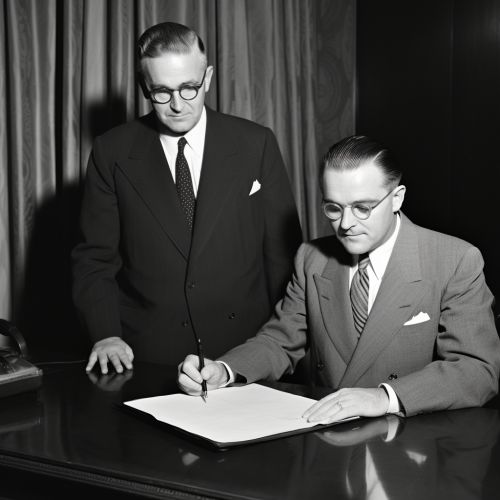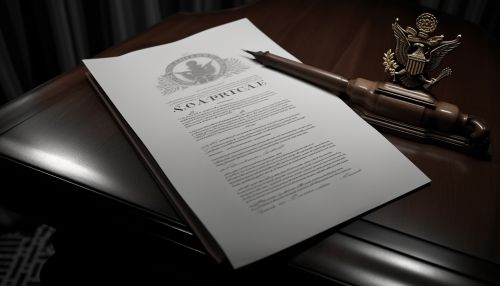National Security Act of 1947
Origins and Purpose
The National Security Act of 1947 was a major restructuring of the United States government's military and intelligence agencies following World War II. The majority of the provisions of the Act took effect on September 18, 1947, the day after the Senate confirmed James Vincent Forrestal as the first Secretary of Defense.
The Act merged the Department of War (renamed as the Department of the Army) and the Department of the Navy into the National Military Establishment (NME), headed by the Secretary of Defense. It also created the Department of the Air Force and the United States Air Force, which separated the Army Air Forces into its own service. It also protected the Marine Corps as an independent service, under the Department of the Navy.
Aside from military reorganization, the act established the National Security Council and the Central Intelligence Agency, the U.S.'s first peacetime non-military intelligence agency.


Provisions of the Act
The Act of 1947 was a sweeping reorganization of the U.S. military and intelligence agencies. The act and its changes, along with the Truman Doctrine and the Marshall Plan, were major components of the Truman administration's Cold War strategy. The bill signing took place aboard Truman's VC-54C presidential aircraft Sacred Cow, the first aircraft used for the role of Air Force One.
The majority of the provisions of the Act took effect on September 18, 1947. His power was initially limited and it was difficult for him to exercise the authority to make his office effective. This was later changed in the amendment to the act in 1949.
Impact and Legacy
The National Security Act of 1947 has been described as the "Constitution" for the U.S. national security apparatus. It has had far-reaching implications for U.S. defense and foreign policy. It was the foundation for the modern U.S. military and intelligence community, establishing the framework for the organization of the U.S. military for the next 70 years.
The Act has been amended numerous times to adapt to the changing threats and security concerns facing the U.S. The most significant amendments were made in 1949, 1953, 1958, and 1986.
Amendments to the Act
The Act was amended in 1949, when it was renamed the Department of Defense. This amendment also expanded the powers of the Secretary of Defense to aid in maintaining civilian control of the military. The Act was further amended in 1953, 1958, and 1986.
See Also
Truman Doctrine Marshall Plan Department of Defense Central Intelligence Agency National Security Council
